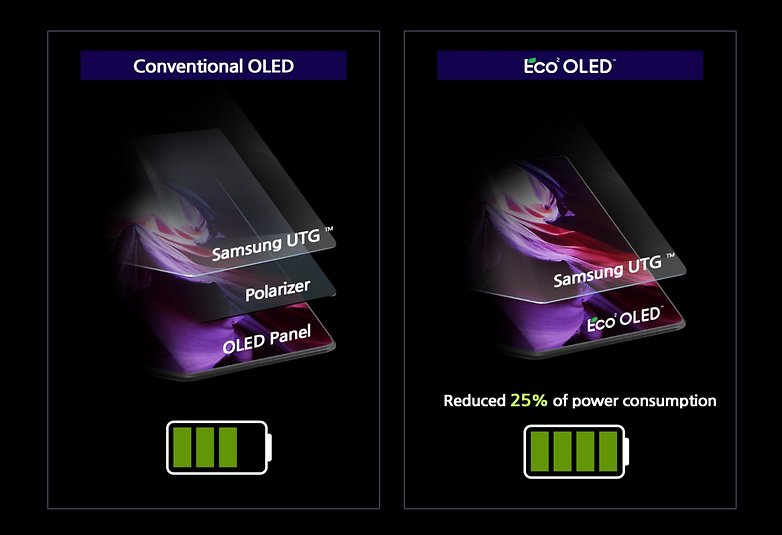
[ad_1]
Samsung reveals details behind its latest OLED display innovation included in the Galaxy Z Fold 3. Called Eco2 OLED, the new AMOLED technology is brighter and less power-hungry.
The Galaxy Z Fold 3 held a lot of surprises for reviewers who got their hands-on experiences earlier last week. Increased durability? Refined looks? Cheaper pricing? The new foldable phone seems to have it all. Now it’s time to look at what is happening under — or in this case on — the screen.
We’ve all been there. We leave the house only to realize we forgot to charge our device overnight. Oh, the horror! Sacrifices have to be made. We lower screen brightness, often to uncomfortably low levels. Thankfully, Samsung’s Eco2 OLED display tech is a first step to alleviating this problem.
As Samsung reports, the Galaxy Z Fold 3 boasts new display technology that offers a power reduction of 25%. The new display brings two major improvements. Increased efficiency and a reduction in the plastic of the device.

Formerly known as POL-LESS, the new technology allows for the removal of the polarizer film from the top of the display. The polarizer is responsible for filtering unwanted light from the outside. But, it also means that light from the display is harder to escape, reducing brightness.
With the removal of the polarizing film, the screens can be brighter (up to 33%) and, in turn, consume less energy. The Eco2 OLED is also thinner in principle. It allows for a reduction of about 45 microns in thickness, which may sound inconceivably small, but when you have displays that are supposed to bend, every digit matters!
Will you be comfortable increasing the brightness if the screen consumes less battery? Let us know below!
This news article was written as part of the hiring process of a new editor for NextPit.
[ad_2]
Source link